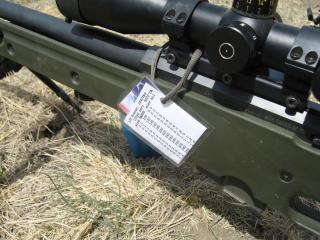Ballistic Data
The last key piece of "equipment" required is not an object, it is DATA. Ballistic data is key to
making long-range hits. This can be generated by one of the ballistic calculator computer programs
such as Sierra Infinity, Exbal, or JBM, or the shooter can get a set of data for his cartridge (or a
reasonably similar cartridge) and shoot on a known-distance range at intervals to generate data for
his rifle. External ballistics has been a studied for over a hundred years and the programs we
have today to predict the trajectory are pretty much "right on", provided that the input data
plugged in is good. With a solid 100-yard zero and a data-sheet from the computer, numerous
shooters have made first-round hits at 500, 700, and 1000 yards, at least,
The key inputs are: bullet ballistic coefficient (BC), muzzle velocity (MV), sight center over bore center distance, zero distance (100 yards recommended), and environmental conditions (station pressure and/or altitude, temperature and humidity).

For example, my .308 load changes approximately 1 click (0.1 mil) at 1000 yards every 500' density altitude change (density altitude is a combination of station pressure and temperature rolled into one number). Knowing this rule of thumb, I don't need a sheet for every single change in altitude or temperature-- I can use the sheet I have and apply the rule. But if I am travelling to a much higher or lower location, I will print out a new card for that location. The article OPTICS FOR PRACTICAL LONG-RANGE RIFLE SHOOTING has an overview of rifle trajectory and what a data-card looks like. I normally use a short piece of shoestring or para-cord to tie the "current" data-card to the scope body. This prevents it from getting lost or blowing away, and is right where I can reach to look at it while on the gun.
You can skip to PRACTICAL LONG RANGE RIFLE SHOOTING - PART II: OPTICS or finish up this section with sample data cards.
|